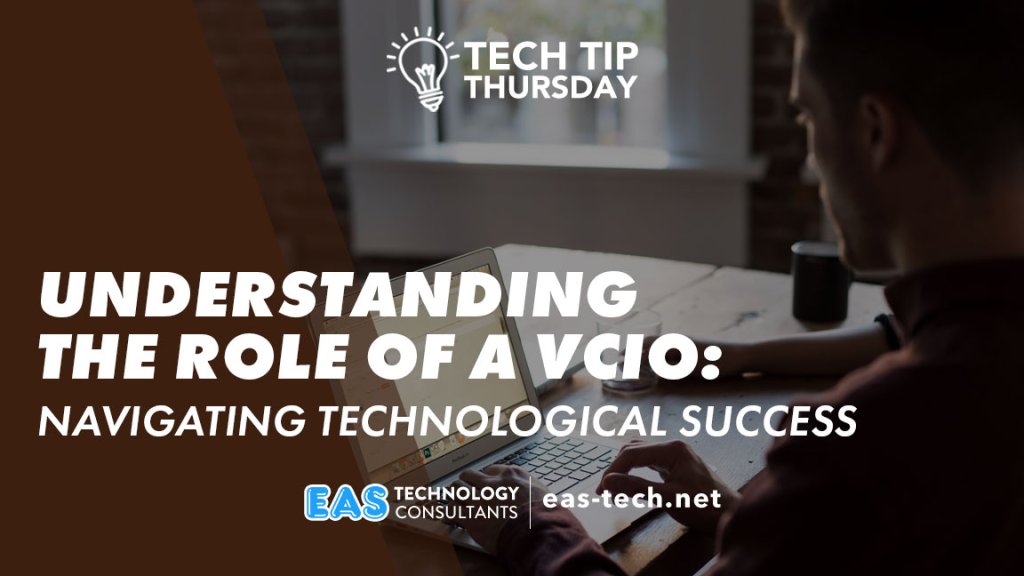
In today’s rapidly evolving technological landscape, businesses of all sizes are finding it imperative to harness the power of information technology to drive growth and innovation. One key player in this journey is the Chief Information Officer (CIO), responsible for aligning technology strategies with business goals. However, a relatively new role has emerged that offers a more flexible and cost-effective solution: the Virtual Chief Information Officer (vCIO). Let’s look into the concept of a vCIO, highlight essential qualities to look for when considering one, clarify the distinction between a CIO and a vCIO, and explore the advantages of incorporating a vCIO into your organization.
Understanding the vCIO Role
A Virtual Chief Information Officer (vCIO) is an outsourced professional who takes on the responsibilities of a traditional CIO but works remotely or on a part-time basis. The vCIO’s primary focus is to align technology strategies with business objectives, ensuring that the organization’s technological investments contribute to its overall success. The vCIO becomes a strategic partner, guiding the company’s IT decisions and providing insights into emerging trends and opportunities.
Qualities to Seek in a vCIO
- Strategic Thinker: A top-quality vCIO should possess strong strategic thinking abilities. They must understand the organization’s business model, goals, and challenges to formulate effective technology strategies that drive innovation and growth.
- Industry Knowledge: The vCIO should have a comprehensive understanding of the industry in which the organization operates. This knowledge helps in tailoring technology solutions that are not only aligned with the industry’s trends but also ahead of the curve.
- Communication Skills: Effective communication is essential for a vCIO to bridge the gap between technical complexities and non-technical stakeholders. They should be able to convey their ideas, recommendations, and insights clearly to ensure everyone is on the same page.
- Adaptability: The tech landscape evolves rapidly, and a skilled vCIO must be adaptable to stay ahead. They should be able to assess new technologies and determine how they can be leveraged to benefit the organization.
- Problem-Solving Ability: Challenges in the realm of technology are inevitable. A proficient vCIO should have strong problem-solving skills to address issues as they arise and find innovative solutions.
- Leadership Qualities: Even as an outsourced professional, a vCIO may need to lead and guide the organization’s internal IT team. Leadership skills are crucial for steering the IT department in the right direction.
CIO vs. vCIO: Understanding the Difference
While both CIOs and vCIOs play critical roles in technology management, they differ in terms of structure, commitment, and scope.
A CIO is an internal executive who is a permanent member of the organization’s leadership team. They oversee the entire IT department, manage technology budgets, and are deeply integrated into the company’s operations. CIOs are often more focused on day-to-day IT operations.
On the other hand, a vCIO operates externally and can be engaged on a part-time basis. This arrangement provides flexibility and cost savings, making it an attractive option for smaller organizations. A vCIO’s primary focus is on high-level strategy and consultation, often being engaged for specific projects or strategic planning.
Advantages of Incorporating a vCIO
- Cost-Effectiveness: Hiring a full-time CIO can be expensive, especially for small to medium-sized businesses. A vCIO offers expert guidance without the burden of a full-time salary and benefits.
- Access to Expertise: vCIOs often have a broader range of experience as they work with multiple clients from various industries. This exposure equips them with insights and best practices that can be applied to your organization.
- Flexibility: Organizations can engage a vCIO as needed, whether for short-term projects, strategic planning, or ongoing consultation. This flexibility is particularly advantageous for businesses that don’t require a full-time CIO.
- Fresh Perspectives: An external vCIO brings a fresh set of eyes to the organization’s technology landscape. They can identify areas for improvement that might have been overlooked internally.
- Strategic Focus: By outsourcing the operational aspects of IT management, internal teams can focus more on innovation and core business activities, while the vCIO handles the strategic IT planning.
In a technology-driven world, having a strategic approach to IT is no longer optional. While the traditional CIO role remains valuable, the vCIO model offers a flexible, cost-effective, and expert solution for organizations aiming to navigate the complex intersection of technology and business. By carefully considering the qualities of a vCIO, understanding the distinction between a CIO and a vCIO, and embracing the advantages of this innovative approach, businesses can position themselves for technological success in a dynamic and competitive landscape.
